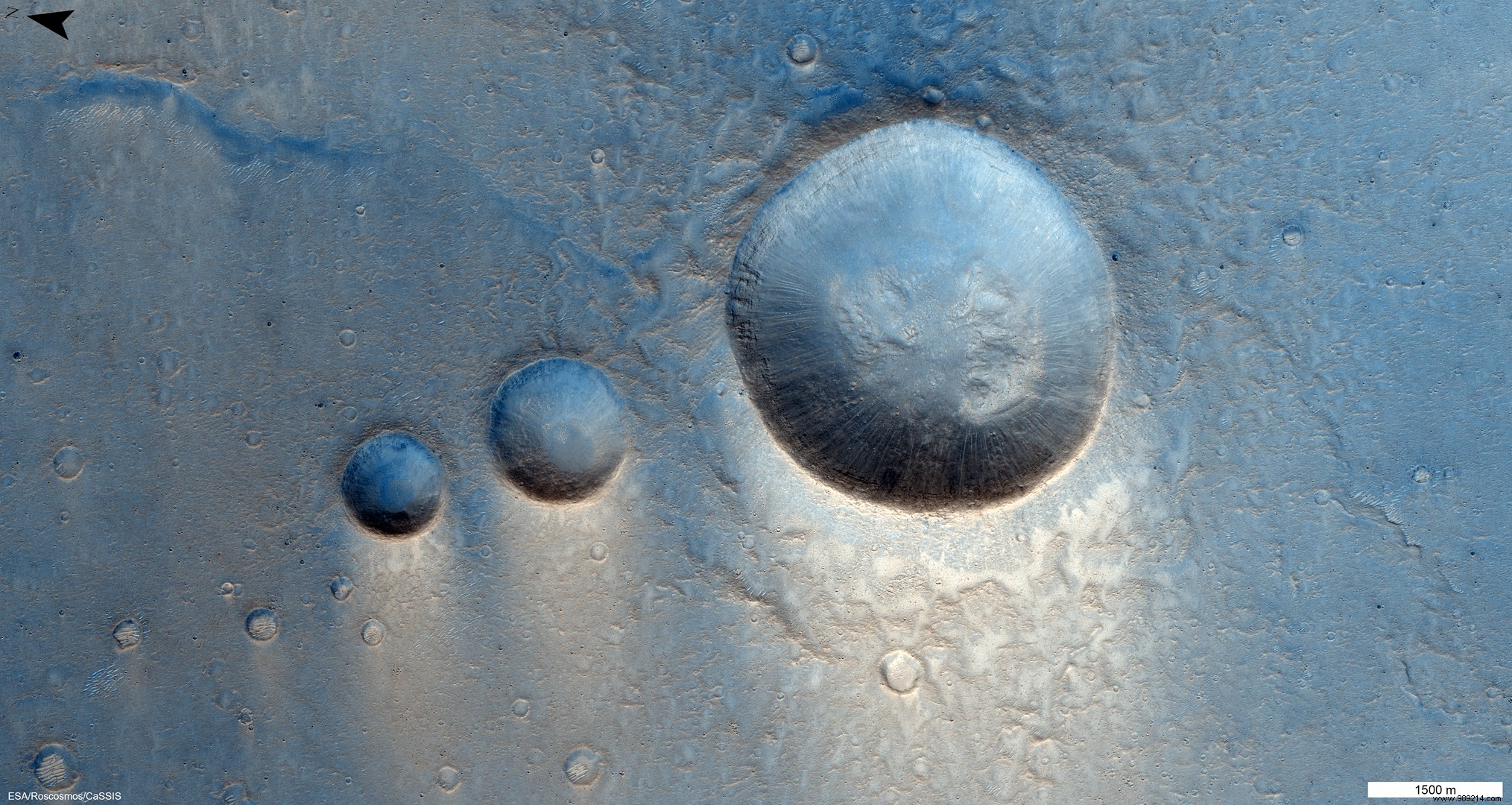A mission for five years, ESA's ExoMars Trace Gas Orbiter recently captured a snapshot that is as interesting as it is intriguing. The image indeed displays three craters aligned from the smallest to the largest.
Developed by the European Space Agency (ESA), the ExoMars Trace Gas Orbiter (TGO) probe has been in space since 2016. On mission until 2022, this probe contains several scientific instruments including the CaSSIS imager . The latter photographs Mars daily. In a statement on August 6, 2021, the ESA published an impressive snapshot showing three craters of different sizes next to each other from smallest to largest.
Dated March 22, 2021, the snapshot shows an area of the Lunae Planum region at latitudes between 0° and 30° N and longitudes between 270° and 315° E In its press release, the ESA explains that the region is known to be covered by large deposits of lava probably from nearby volcanoes Tharsis Montes.
The three craters would therefore be the result of ancient lava flows , thus embodying a vestige of the former volcanic activity of the Red Planet.

Beyond the beauty of the image itself, it gives scientific insights into Mars' past. The researchers from the European agency explain that by zooming in on the largest craters, it is possible to observe layers in the inner rim. However, these layers could represent the successive accumulation of lava flows in the zone. In other words, volcanic activity was particularly intense in the area, as several large eruptions occurred. From this stratification, planetologists can therefore attempt to trace the geological history of the area and the planet as a whole by combining these new data with other observations already made in the past.
Today science knows that Mars was once active, both seismically and volcanically . Nevertheless, the debate on its current activity is more than ever stimulating discussions in the scientific community. The idea of a completely dead red planet is also strongly questioned in several studies, these suggesting that Mars is much more alive than one might think.
Finally, let's remember that in March 2020, the ESA and the Russian agency Roscosmos announced the postponement of the ExoMars 2020 mission to 2022. Indeed, the probe does not was technically not ready for previous launch windows. The goal of the mission will be to land the probe and free the 300kg ExoMars rover. The purpose of this will be to identify the presence of water or hydrated materials and to bring back a core taken up to two meters deep in Martian soil.